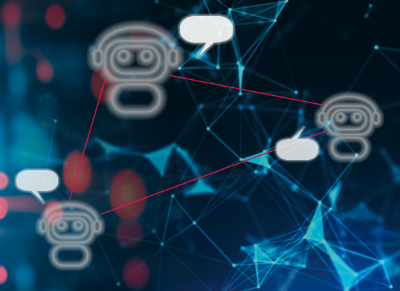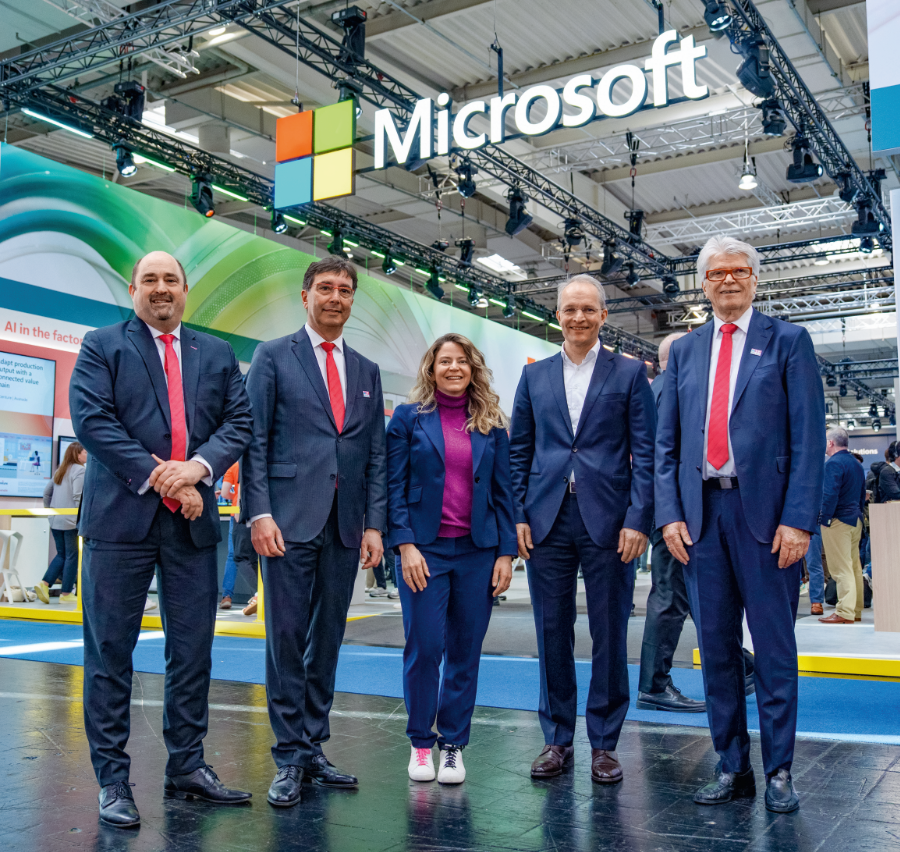Text Ulrich Sendler ––– Photography
Alot of time and money is wasted in day-to-day planning and designing as staff try to avoid having to “reinvent the wheel”. The longer the list of processed orders, the more time-consuming the search for previous similar orders becomes. Before engineers can start their real work, they first need to search out pre-existing designs, which can take a lot of time and effort. Of course, there won’t necessarily be an exact match, but there might well be a mounting plate that’s very close to what the current customer is looking for. The same applies to enclosures.
This is exactly where the Eplan Copilot, developed on the basis of Microsoft OpenAI Services, comes in. There’s no need for new AI models, weeks of training or any setting of parameters. All you need is a direct link connecting tried-and-tested models and algorithms with eligible data. It’s as though the AI experts at Eplan have tied together only the loose ends of all the threads. The result is both astonishing and impressive.
Copilot with expert knowledge
Users can prompt the Copilot by explaining in their own words what they are look- ing for. They also enter the parts list, which specifies all the necessary components. Instead of searching in random data lakes or sifting through all sorts of globally available data on the Internet, the Copilot focuses specifically on the key sources of data for Eplan users. These include the Eplan Data Portal, for example, which now contains more than two million components and two million variants from around 500 manufacturers. Within just a few seconds, several enclosures that are suitable for the components in question appear on the screen. Enclosures that are neither too big nor too small.
an one of the AI agents already available, such as ChatGPT? These other AI agents might provide more answers, and may even be faster, but the answers would almost certainly not be of much use. That’s because generally available AI tools have as much of an idea about electrical engineering as they do about arable or livestock farming. They may well find something that doesn’t actually exist. With the Eplan Copilot, this simply couldn’t happen – it would just say it couldn’t find anything.
The basic models are now available for virtually every purpose and are so good that industry does not need to develop anything new for its AI in this context. Moreover, the time needed for complex training can be saved.
Mounting plate layout in 3D
Creating the mounting plate on which all the components needed for the order in question are to be mounted and wired is an even more complex process than searching for a suitable enclosure. Eplan has bundled its experts’ knowledge of best practices for this design process into its Copilot. Now, the design engineer can instruct the AI agent – as these kinds of tools are often called – to suggest a mounting plate for the selected enclosure and the parts list entered. A split second later, it comes back with a solution – and it’s even in the form of a 3D model.
Eplan has gone further still with its AI use case to help users even more. Unlike other AI systems, the Eplan Copilot offers extremely useful transparency. The model is displayed with a concise statistic. This tells the user, for example, that from a parts list of 103 components, the Copilot was able to find and position them all. Alternatively, it might tell the user that it was only able to find and position 101 of them and specify which parts from which manufacturer it was unable to find. The user then sees immediately how much work they still need to do on the design and in which areas.
There’s another big plus point, too. The displayed model is not merely a visualisation of the mounting plate. It can be loaded directly into an Eplan project as a 3D design, so the user can build on it, add to it or alter it if necessary. This Copilot knows where it needs to look and finds what it is looking for. What’s more, it acts as a highly professional assistant for Eplan users in their everyday project work.
AI takes over routine tasks
All these benefits were revealed at Hannover Messe – to great acclaim from visitors. But what exactly does the revolution in engineering announced by Sebastian Seitz, CEO of Eplan and Cideon, consist of? Is it just about saving time and reducing the workload? The revolution has only just begun and, although we’ve only seen the first fruits of it, the signs are already good. It’s still hard to describe its true scale, because it will be a few years yet before this becomes clear in practice.
As Dr Thiemo Gruber, Senior Vice President Solutions and Development at Eplan, explains: “Our vision is for Eplan and the associated AI agents to become a single, large tool kit. In engineering, the AI agents will relieve users of one routine task after another. Copy & paste will become superfluous, because the computer and our algorithms can do that better and faster. The revolution will be that developers will focus almost exclusively on creative work. That will mean more new products and more innovation in a much shorter time, with fewer tedious additional tasks.”
In electrical engineering, AI is therefore not a substitute for working with Eplan software and other systems. Instead, it’s about gradually changing the software and supplementing it with tools such as the Copilot, and about how we work with both. Anybody who believes that engineers, CAD experts and their knowledge will no longer be needed any time soon has failed to understand the difference between mainstream AI and Industrial AI.
Co-Creation between copilots
Needless to say, the Copilot is not restricted to Eplan data and projects. A second use case presented at Hannover Messe demonstrated the extent to which the Copilot can also help with collaboration between partners and their systems. The case in question involves collaboration between the Siemens Industrial Copilot and the Eplan Copilot. For Siemens, this is very much the vision of working with software – not exchanging and converting data, but instead communication between different AI agents via APIs. This example was equally impressive.
user learns from the product lifecycle AI agent that electrical components displayed with the relevant article numbers and manufacturers have reached the end of their lifecycle. They come from an Eplan project. The Siemens Industrial Copilot finds replacement components. A hardware configuration agent replaces them in the TIA Portal. An orchestrator agent initiates the Eplan Copilot, which makes the changes in the circuit diagram and mounting plate layout.
It’s a small example that illustrates a big vision! AI can also support engineering processes very effectively, all the way through to largely automating even critical work steps – in this case, checking the validity of product components and making replacements in the documentation if necessary. What’s more, AI agents can evidently communicate and work together with project partners’ AI agents with relative ease. The examples given are only a tiny sample of the large range of AI projects being worked on by the Eplan team. It will be fascinating to see what new demos await at upcoming trade fairs.


